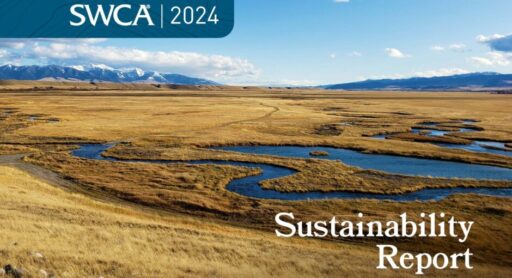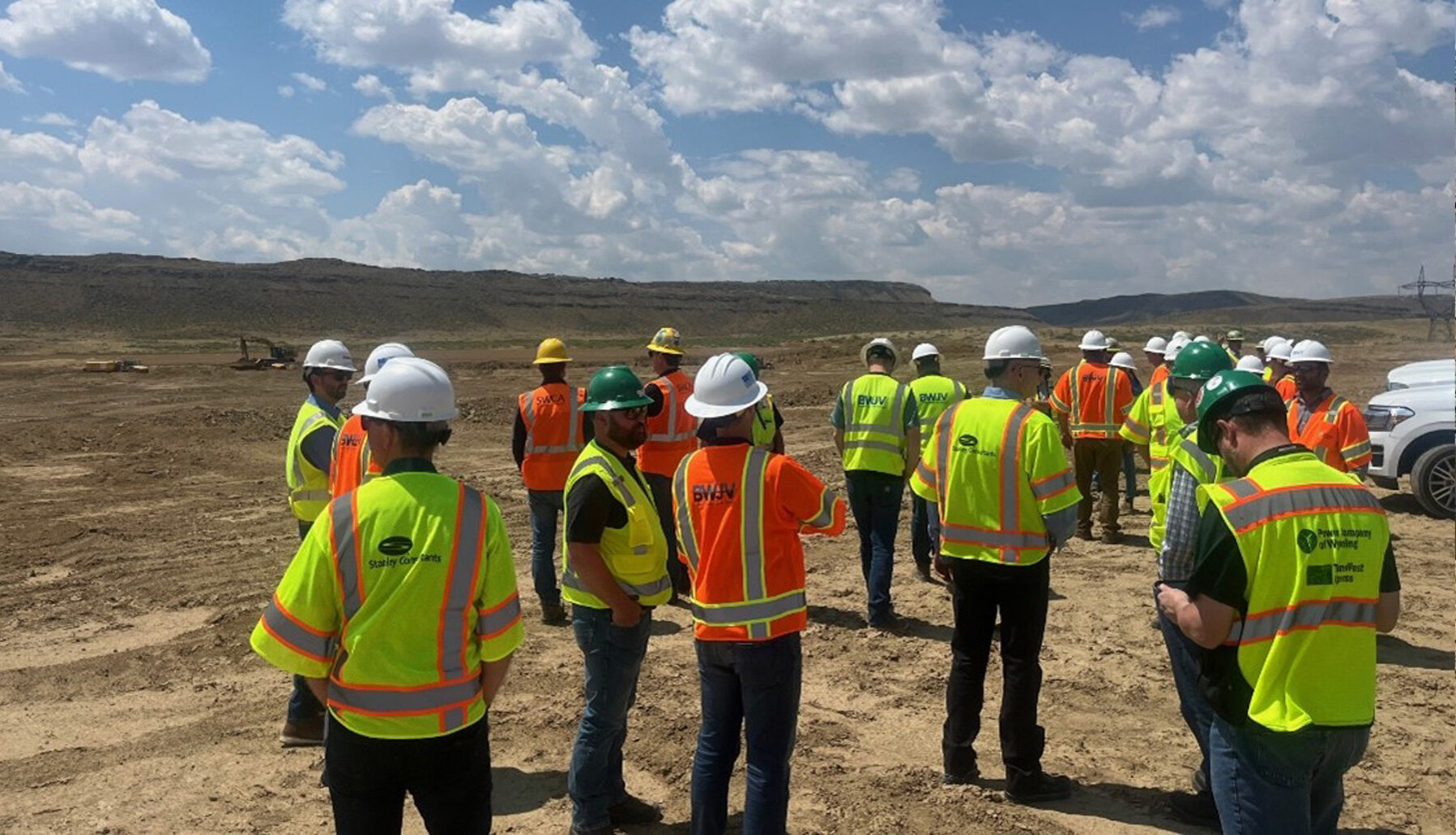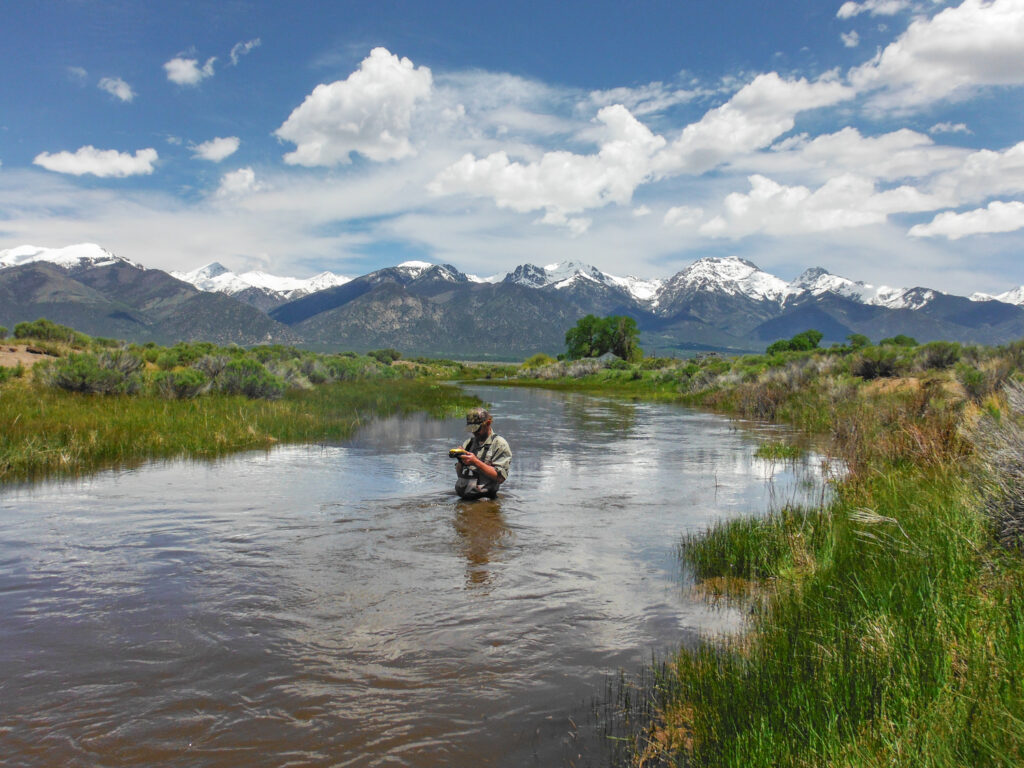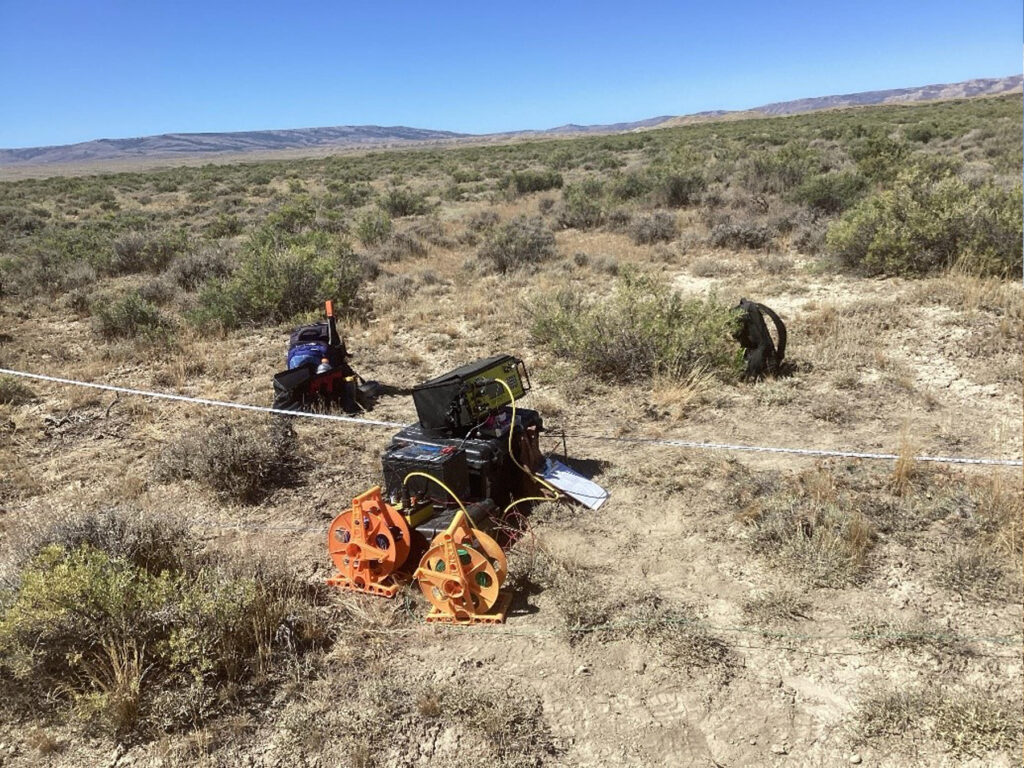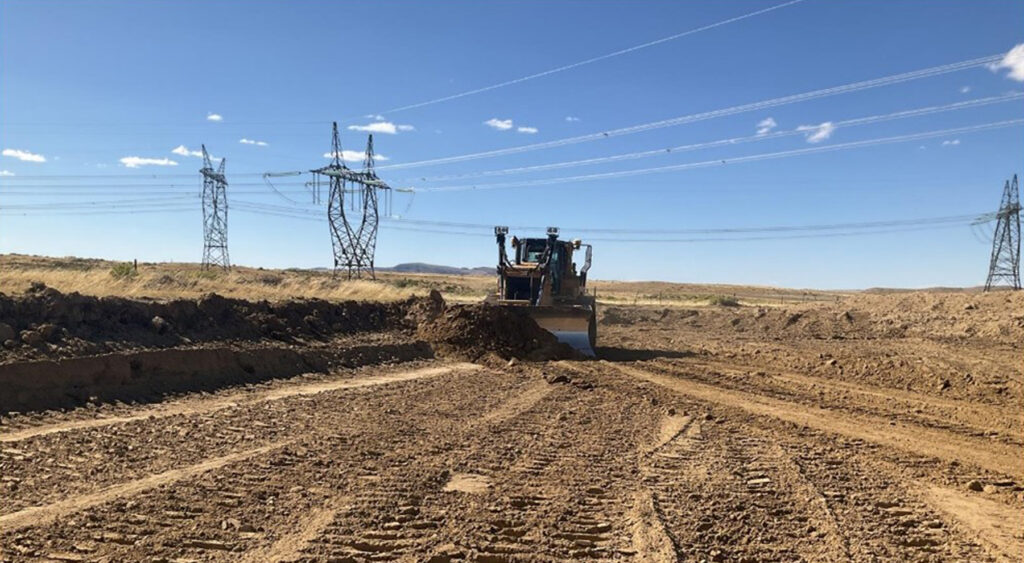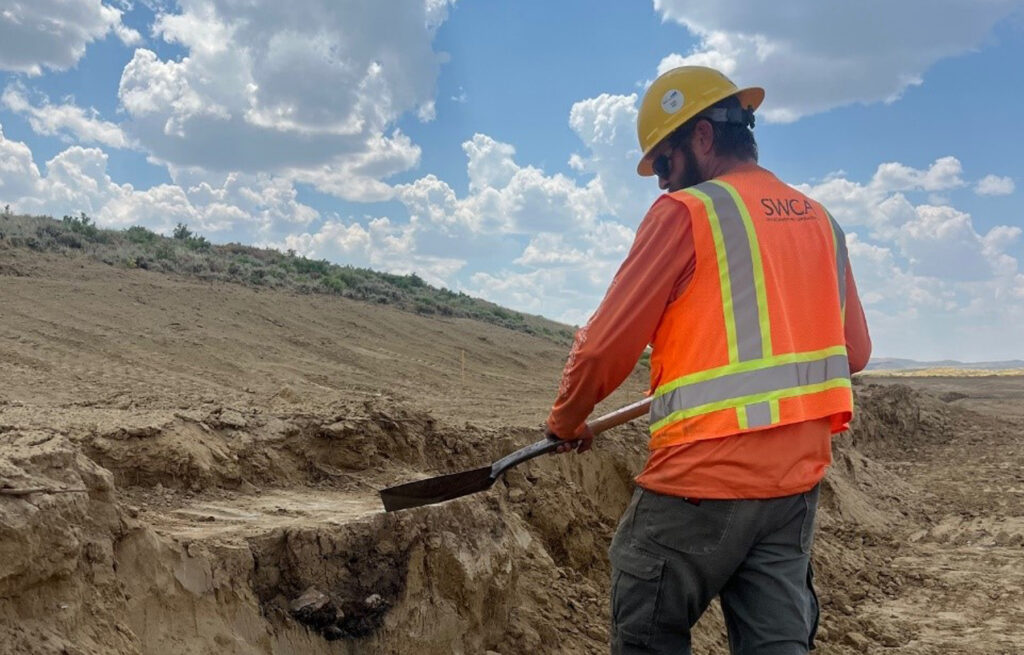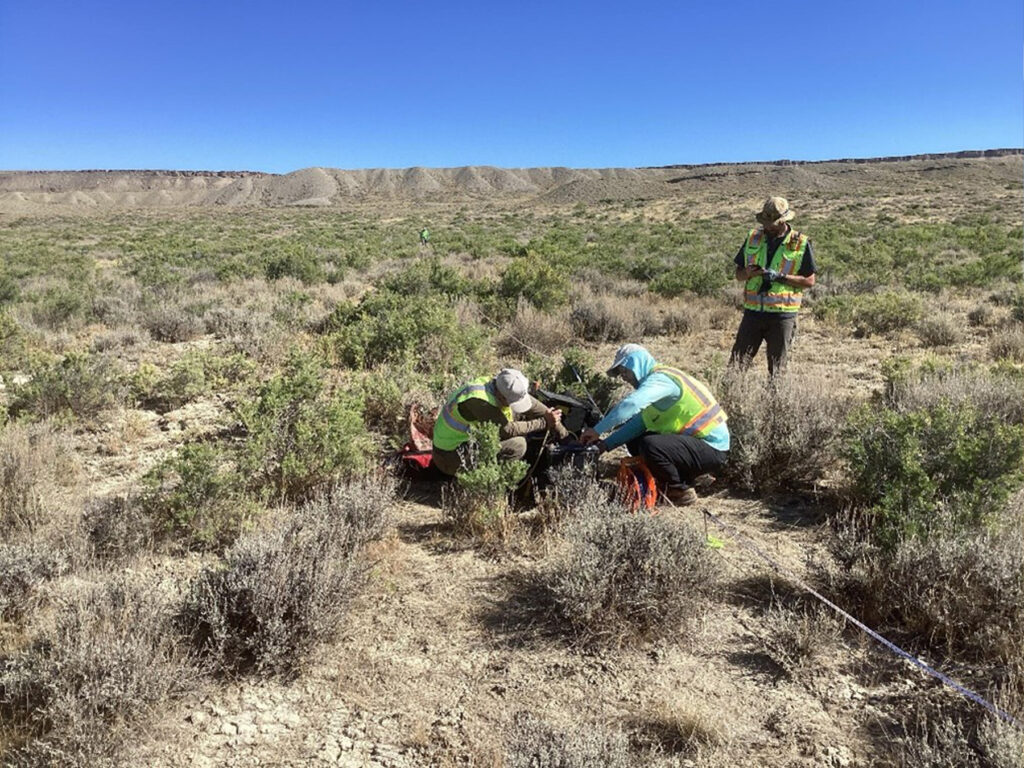SWCA has served as TransWest’s primary environmental consultant, providing regulatory and resource guidance and strategy on all issues throughout the course of this project. SWCA performed services including program management support, environmental permitting, high-level agency coordination, biological resource management, cultural resource management, environmental compliance, mitigation strategies, ecological restoration, waste management plans and more. SWCA performed all services with deep knowledge of the of natural and cultural resources of the Intermountain Region, as well as detailed understanding of the species biology and system ecology to analyze project effects, understand critical functions for avoidance and minimization, and propose appropriate best management practices and mitigation approaches. Using a dedicated project management and resource team, with effective data collection, analysis, and planning, SWCA has worked closely with TransWest to provide immediate results and solve their most challenging environmental permitting, mitigation, and compliance issues.
SWCA Services
- Performing high-level agency coordination: SWCA is providing county, state, and federal permitting support for the TransWest Express Transmission Project. This project includes regulatory agencies from BLM, USFS, USFWS, U.S. Bureau of Reclamation, and various state agencies and multiple tribal entities. SWCA coordinated with multiple federal and state agencies, two National Forests, and 12+ BLM offices. SWCA reviewed permitting documents of all kinds, participated in public meetings, and assisted in the development of strategies to ensure project compliance with relevant state and federal environmental statutes. The final EIS and ROD required involvement with the cooperating agencies and client to ensure that the final project design incorporates ROD restrictions and stipulations. The SWCA team drafted response letters and, with TransWest’s approval, sent them to local governments, agencies, or the public to address questions and comments that warranted a response and proactively resolved and addressed any potential issues prior to hearings.
- Environmental permitting and compliance support: Through leading field surveys and coordination across multiple U.S. Army Corps of Engineer Districts and state offices, SWCA obtained Clean Water Act 404 permit issuance and 401 certifications. As part of the process for obtaining a Wyoming Industrial Siting (WY ISC) Permit, the SWCA team implemented a successful public outreach management plan to disseminate required and relevant application information and analyses to local governments and the general public in Carbon and Sweetwater Counties, Wyoming. SWCA also completed guidance for all ESA-related issues, including monitoring and mitigation strategies for threatened and endangered species, the development of SF 299 forms, and reviewing of the National Environmental Policy Act (NEPA) and National Historic Preservation Act (NHPA).
- Prepared comprehensive POD: SWCA developed a POD and associated documentation involving development of project-specific plans that include an environmental compliance plan, water resources plan, reclamation plan, erosion control plan, waste management plan, and invasive species management plan, among others.
- Developing mitigation strategies and endangered species action plans: SWCA evaluated the potential project impacts and identified measures that will be taken to avoid and minimize impacts to threatened and endangered species including desert tortoise, Mexican spotted owl, southwestern willow flycatcher, and Ute ladies’-tresses. SWCA also developed monitoring protocols for habitat assessments for threatened and endangered plant species throughout the Uintah Basin.
- Greater sage-grouse: SWCA is also providing support services for the development of mitigation strategies for greater sage-grouse that include the development of an HEA model that evaluated potential project impacts to greater sage-grouse and identifies the types and quantities of mitigation and conservation actions necessary to offset those impacts. The HEA process developed by SWCA has been cited by the USFWS and BLM as a component of the analysis framework for all major transmission lines in the western United States.
- Natural resource surveys: Studies were completed to assess the impact of the proposed transmission line on greater sage-grouse, threatened and endangered plants and animals, big game, and general wildlife and vegetation across the 753-mile ROW. These biological resources surveys were completed across 11 BLM field offices, four states, and dozens of counties. The team also provided natural resource experts for terrestrial and aquatic invasive species surveys throughout the project area.
- GIS spatial analysis and/or statistical data analysis: The project involves extensive GIS datasets, geodatabases, project and task completion trackers, infrastructure realignments and adjustments resulting from resource data inputs, and mapping. This included adding datasets from 12+ BLM field offices, USFS, USFWS, and multiple state agencies. All data and maps were created using Esri ArcGIS 10.0 or later. Spatial analysis of the resource constraints relative to the project infrastructure is continuous and ongoing to reduce and avoid impacts relative to siting of project elements within the ROW.
- Data collection and analysis: Analyses included studies on geology and mineral resources, social and economics, vegetation, and wildlife across the six-state project area.

